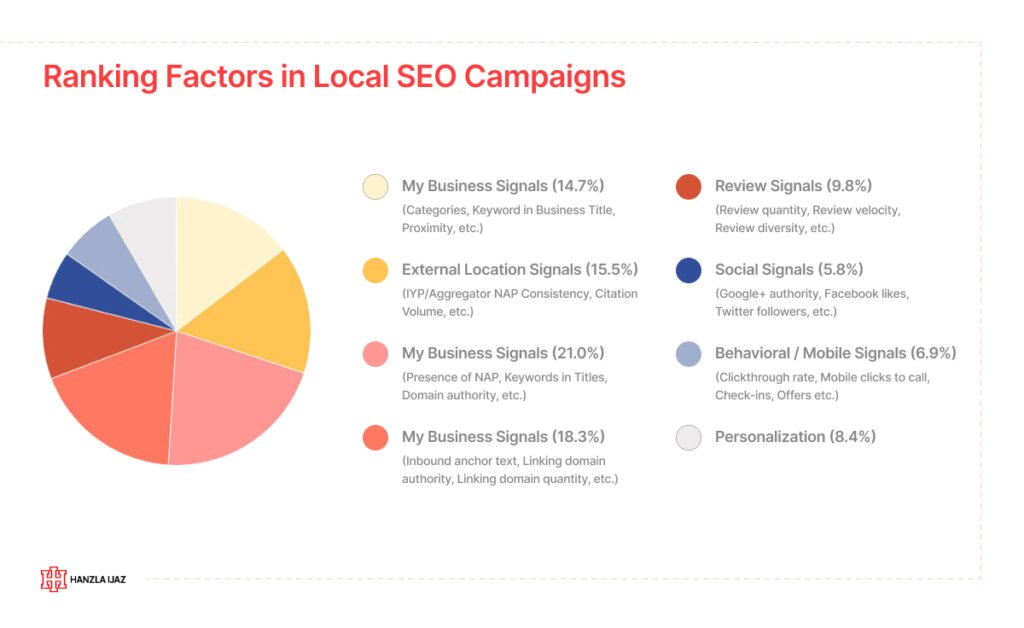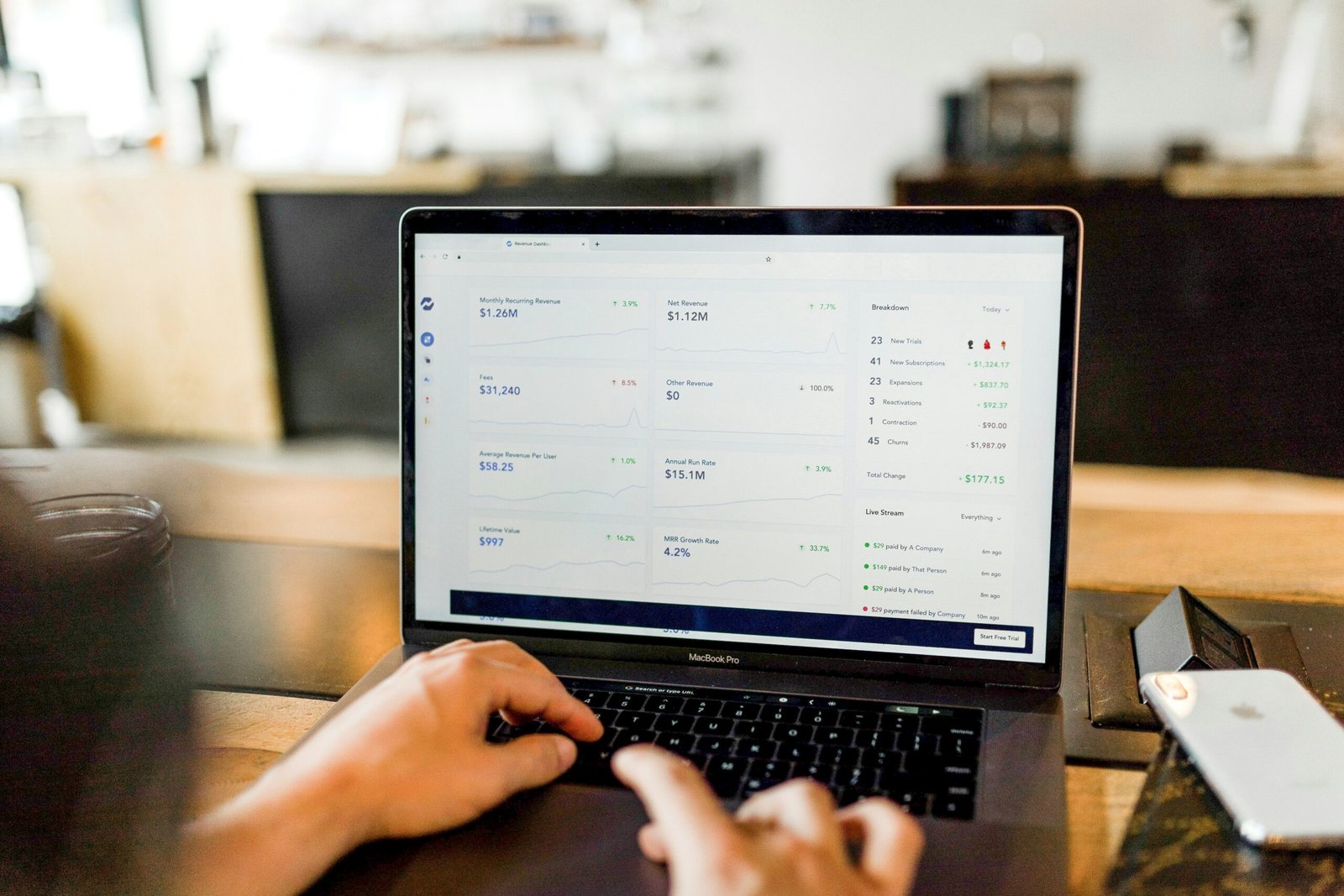Top Local SEO Ranking Factors for 2024: Maximising Your Business Signals
- Hanzla Ijaz
- local seo
- 0 Comments
|
Getting your Trinity Audio player ready...
|
In today’s hyper-competitive digital landscape, getting your business noticed locally can make or break your success. As someone deeply involved in the digital marketing world, I’ve seen firsthand how crucial it is to understand and leverage local SEO ranking factors. It’s not just about being found; it’s about being found by the right people at the right time. Let me take you through the essential elements of local SEO, backed by both personal experience and industry insights, to help you optimise your strategy and climb the Google SERPs.
Why Local SEO Matters?
When I first started focusing on local SEO, I quickly realised that it’s not just about having a website; it’s about making sure your business appears prominently in local search results. Imagine you own a bakery in New York City. If someone nearby searches for “best bakery near me,” you want your business to pop up at the top. But how do you achieve that? The answer lies in understanding and applying the right local SEO ranking factors.
The Key Local SEO Ranking Factors
Through trial and error, I’ve identified several key factors that significantly impact local SEO rankings. Let’s break them down:

My Business Signals (21.0%)
- NAP (Name, Address, Phone Number): Ensuring your NAP information is consistent across all platforms is critical. Early on, I learned that inconsistencies could confuse search engines and potential customers. This alone can hinder your local SEO efforts.
- Keywords in Business Titles: Keywords still play a vital role, especially in titles. Including relevant local keywords in your business title can give you an edge. For example, adding “New York Bakery” to your title can help you rank higher for searches in that area.
- Domain Authority: Building domain authority takes time, but it’s worth the effort. Quality backlinks, relevant content, and consistent online presence all contribute to a higher domain authority, which in turn boosts your local rankings.
External Location Signals (15.5%)
- NAP Consistency: Your NAP details should match exactly across all online directories and citation sources. Inconsistencies here can be detrimental. Tools like MOZ Local and SEMRUSH have been invaluable in keeping this in check.
- Citation Volume: The more local citations you have, the better. I’ve found that listing your business on multiple local directories and websites increases visibility and improves search rankings.
Inbound Anchor Text Signals (18.3%)
- Linking Domain Authority: High-quality backlinks from reputable sites can work wonders for your local SEO. Early on, I prioritised building relationships with local bloggers and news sites to earn valuable backlinks.
- Anchor Text: The text used in your backlinks matters too. Using relevant, location-based keywords in your anchor text can provide a significant boost.
Review Signals (9.8%)
- Review Quantity: More reviews mean more trust. I’ve always encouraged satisfied customers to leave reviews, and it’s paid off. A higher number of positive reviews not only boosts your ranking but also builds trust with potential customers.
- Review Velocity: The speed at which you acquire reviews is also important. A sudden influx of reviews might seem suspicious to search engines, while a steady stream of reviews is a positive signal.
- Review Diversity: Reviews from different platforms (Google, Yelp, Facebook) add credibility. I always advise clients to diversify their review sources to build a more comprehensive online reputation.
Behavioural/Mobile Signals (6.9%)
- Clickthrough Rate (CTR): A high CTR indicates that your business is relevant to searchers. Regularly updating your meta descriptions and titles to make them more appealing can help improve your CTR.
- Mobile Clicks to Call: In the mobile-first world we live in, optimising for mobile interactions is crucial. I’ve seen businesses thrive simply by making it easy for mobile users to contact them directly through search results.
Personalisation (8.4%)
- User’s Search History: Personalisation is an evolving factor in local SEO. Google tailors search results based on individual search history and behaviour. Therefore, creating a strong, consistent online presence can help ensure you’re the top result for your target audience.
- Geographical Location: Proximity still plays a significant role. If your business is close to the searcher, you’re more likely to rank higher. That’s why having a verified Google My Business listing with accurate location details is essential.
Social Signals (5.8%)
- Social Media Engagement: Social signals might not be the strongest ranking factor, but they can’t be ignored. I’ve found that an active presence on platforms like Facebook and Twitter can drive traffic to your site, indirectly supporting your local SEO efforts.
- Google+ Authority: While Google+ is no longer active, having a strong presence on Google’s remaining platforms, like Google My Business, remains crucial.
Practical Tips for Dominating Local SEO
From my experience, here are some actionable tips to help you master local SEO:
- Claim and Optimise Your Google My Business Listing: This is a no-brainer. Make sure your profile is complete, with accurate information, images, and regular updates.
- Encourage Customer Reviews: Don’t be shy about asking for reviews. A well-timed email or a simple request after a successful transaction can go a long way.
- Focus on Quality Content: Regularly publish local content that resonates with your audience. Blog about local events, news, and industry trends.
- Leverage Local Partnerships: Collaborate with local influencers, bloggers, and businesses to build backlinks and drive traffic.
Conclusion: The Path to Local SEO Success
Mastering local SEO isn’t an overnight process. It requires consistent effort, strategic planning, and a deep understanding of the factors that matter most. By focusing on the key ranking factors and leveraging them effectively, you can significantly improve your local search presence, drive more traffic, and ultimately grow your business. My journey with local SEO has been filled with learning and adapting, and I hope these insights help you navigate your own path to success.






